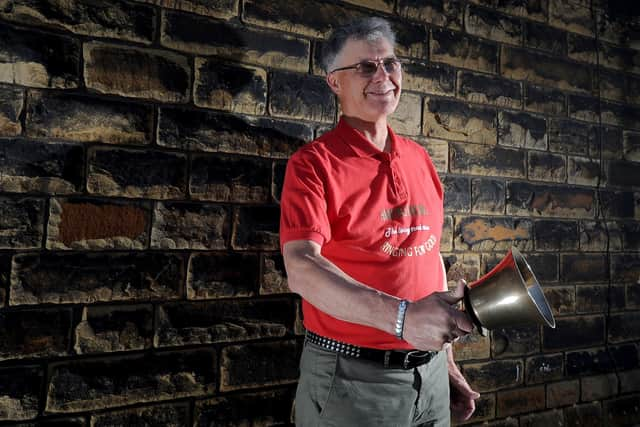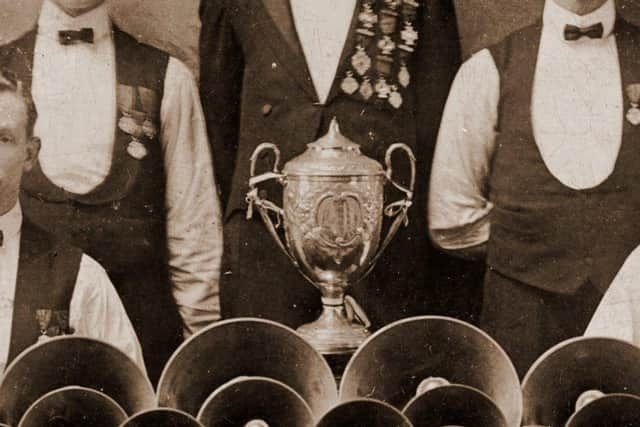The Huddersfield sound – how Pennine bellringers made rock music swing
And as fund raising began for a new set of instruments with which to pass down its obscure heritage to a new generation, a pivotal, musical figure emerged.
Jimmy Ellis was a producer before anyone knew what one was. He took the traditional music of the Pennines and turned it into the prize-winning pop of its day. His influence, and that of villagers before him, has echoed through every band since, said Peter Fawcett, an expert on the almost lost art of Yorkshire bell ringing.
Advertisement
Hide AdAdvertisement
Hide Ad“The first bands of the working man were handbell ringers. They predate brass bands by 200 years,” he said. “Every musical group has its origins in handbell ringing, and I’m including rock bands.”


From the 18th century, handbells were used by Pennine communities as a means of communicating with each other from over the hills. Ringers gathered at wakes – the traditional Northern holiday weeks – to perform and compete with each other.
“Unlike today, the bells were relatively cheap, and travelling bell founders used to go around with carts and sell their wares,” Mr Fawcett said.
Yorkshire developed a distinct style of ringing, with up to 190 bells laid out before the players instead of the standard three dozen. Only a handful of teams still play in the county style and around Huddersfield, the sound of one is beginning to wear thin.
Advertisement
Hide AdAdvertisement
Hide Ad“The Yorkshire style is the traditional way of ringing but it’s a dying art because the bells are so expensive now,” said David Sunderland, musical director of the Clifton Handbell Ringers at Brighouse.


The group bought its current set of 140 bells in 2000, from the same Whitechapel foundry that cast Big Ben. But after two decades of use by eight adult ringers and nine juniors, they are losing their edge.
“We’ll need to start fundraising again to replace them, Mr Sunderland said. “They’re getting rung twice a week, plus concerts, and they’re coming to end of their life.”
Valued at £80,000 they replaced a set of Victorian bells discovered by Mr Fawcett in the 1970s, in the basement of an old mill on Clifton Common, which were then restored.
Advertisement
Hide AdAdvertisement
Hide AdThe discovery prompted the reformation of the Clifton ringers after many years of silence. It also cast new light on the history of the Pennine tradition.
It was an 18th century handbell ringer called Ben Cook who invented the distinct Yorkshire style, said Mr Fawcett, author of a book on the subject. But it was Ellis, another Huddersfield musician, who between 1901 and 1907 turned tradition into art, winning six British Open championships.
“From two different eras, Cook and Ellis were the Jimmy Greaves and Lionel Messi of ringers,” said Mr Fawcett.
Editor’s note: first and foremost - and rarely have I written down these words with more sincerity - I hope this finds you well.
Advertisement
Hide AdAdvertisement
Hide AdAlmost certainly you are here because you value the quality and the integrity of the journalism produced by The Yorkshire Post’s journalists - almost all of which live alongside you in Yorkshire, spending the wages they earn with Yorkshire businesses - who last year took this title to the industry watchdog’s Most Trusted Newspaper in Britain accolade.
And that is why I must make an urgent request of you: as advertising revenue declines, your support becomes evermore crucial to the maintenance of the journalistic standards expected of The Yorkshire Post. If you can, safely, please buy a paper or take up a subscription. We want to continue to make you proud of Yorkshire’s National Newspaper but we are going to need your help.
Postal subscription copies can be ordered by calling 0330 4030066 or by emailing [email protected]. Vouchers, to be exchanged at retail sales outlets - our newsagents need you, too - can be subscribed to by contacting subscriptions on 0330 1235950 or by visiting www.localsubsplus.co.uk where you should select The Yorkshire Post from the list of titles available.
If you want to help right now, download our tablet app from the App / Play Stores. Every contribution you make helps to provide this county with the best regional journalism in the country.
Sincerely. Thank you.
James Mitchinson, Editor
Comment Guidelines
National World encourages reader discussion on our stories. User feedback, insights and back-and-forth exchanges add a rich layer of context to reporting. Please review our Community Guidelines before commenting.